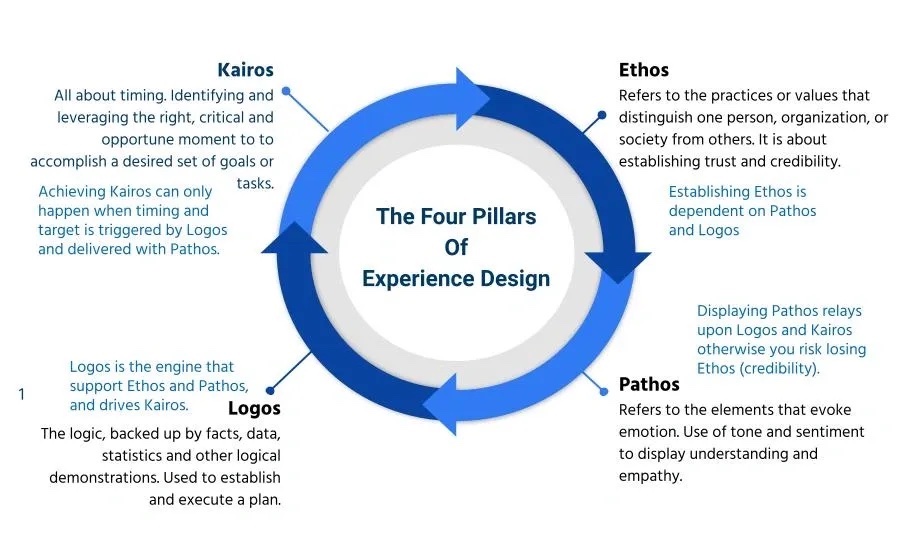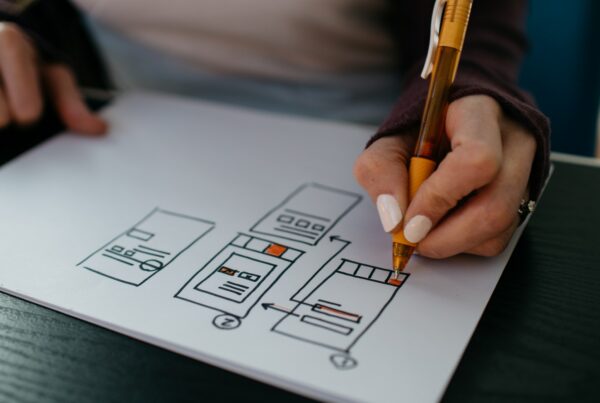
All experiences need to be designed with intent. There are three key types of experiences we focus on when we talk about experience design.
We believe that there are four key pillars to the Experience Design Lifecycle. In all experiences, (employee, customer, and learning), we should make sure each pillar is being addressed. When only three are addressed things can get wobbly. Reduce to two and stuff falls over. For the purposes of this article, we will focus on the Learner experience.

The Learner Experience
Mastering a new skill, learning a new process, or changing your behavior is hard. Most people naturally resist change. The emotional and social situations that surround a ‘change experience’ can make, or break, the learning process. Frustration, boredom, and lack of control all stop us from learning – but if we have a clear purpose, are able to work with autonomy and achieve a sense of mastery, then we’ll have a positive learning experience.
Extraordinary results can be achieved when we learn new ways of thinking, working, and living. However, the benefits that businesses seek when they promote a learning culture won’t be realized unless the learning experience itself is positive.
Create a Learning State of Mind
If you frustrate learners and make them feel like failures with a poor experience of selecting, finding, and interacting with the content, then you have lost the “ethos”. This removes them from a learning state of mind. It is critical to design the full end-to-end experience for learners so the process of learning is effortless. Freeing learners to explore the content in meaningful, succinct, and easy-to-understand experiences.
Learning Requires ‘Experiencing’
Most e-learning ‘sucks’ because someone thought that the consumption of content would automatically lead to learning. But, that’s simply not the case. The way content is presented has a huge impact on learning success. The design of the “kairos” of any experience is critical. The sequence, pacing, and depth of content are as important as the words themselves – and the act of putting those lessons into practice, doing something real – is crucial to creating a true ‘learning experience’. If you’re trying to teach someone something new – get them to apply it!
Sell Season Tickets to Learning
Imagine you’re at a theme park. Are you just thinking about the rides or are you remembering the entertainment, the food, the sites? Sure the rides are thrilling, but if they just sit in a parking lot, you won’t have a nice experience. Great theme parks are a thrilling, unified experience that provides context and connection between rides, and cater to all visitors.
Now, think of your learning platform as the park and your content as the rides. The relationship has to be a harmonious one, for either to be successful. Using established design principles you need to create the right experience for each situation, giving learners the direction they need, delivered with “pathos”, a supportive tone and intention.
Prove Learning Effectiveness
All e-learning has aims and objectives – but can you prove they’ve been achieved?
So often learning is the only part of the organization where ‘not measuring success’ is an option – primarily because most consider it too hard. Perhaps there’s a ‘happy sheet’, maybe there’s an assessment, but these only show us what learners know and how they feel at the time of learning! Truly strategic learning experience design needs to start with looking at the data and defining what success will look like. From there “logos” can be your guide to course evaluations, measuring ROI, engaging learners through progress dashboards and the list goes on. If you can’t prove your learning is effective, you’ll struggle to demonstrate its greater worth to your organization and your learners themselves.





